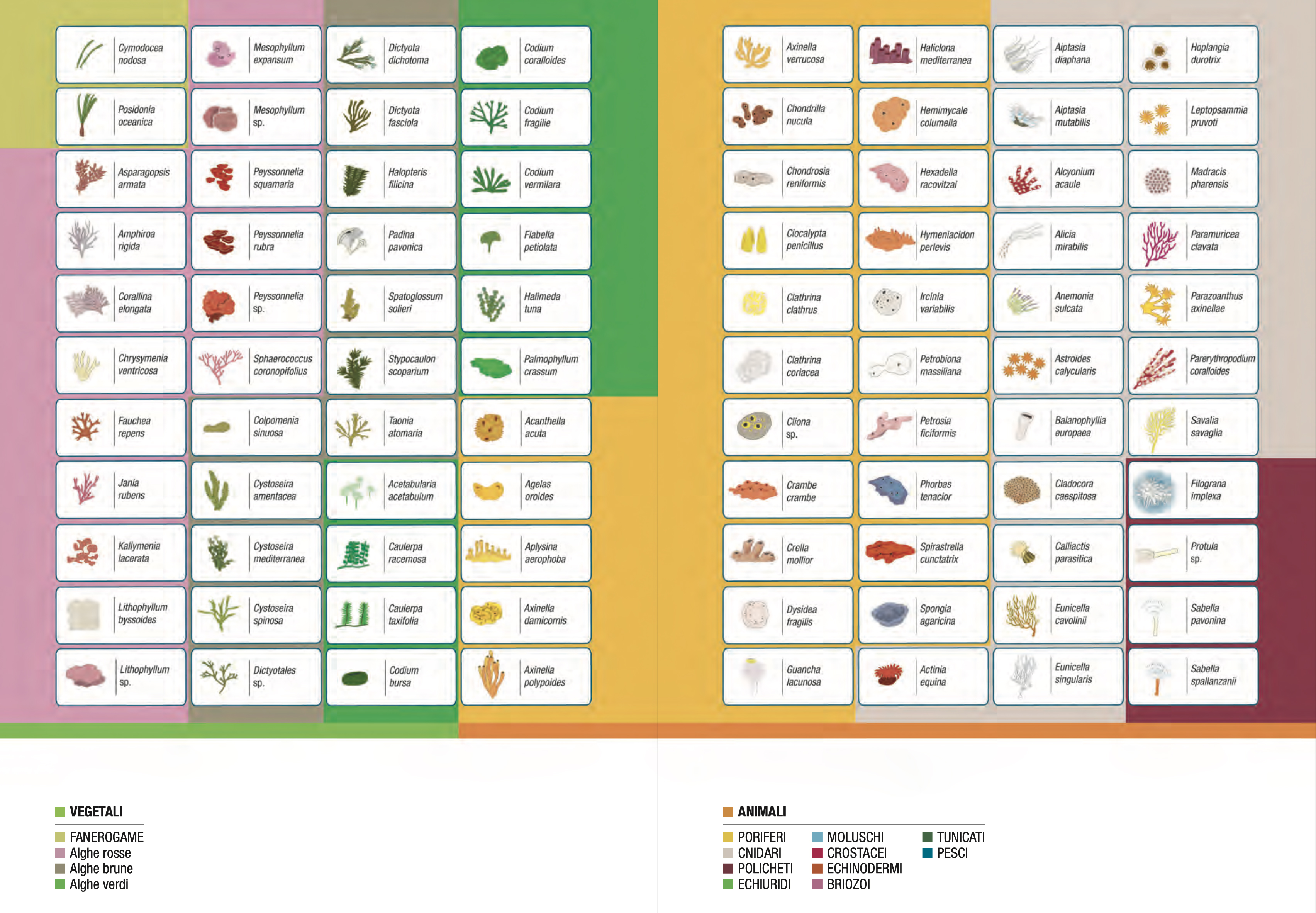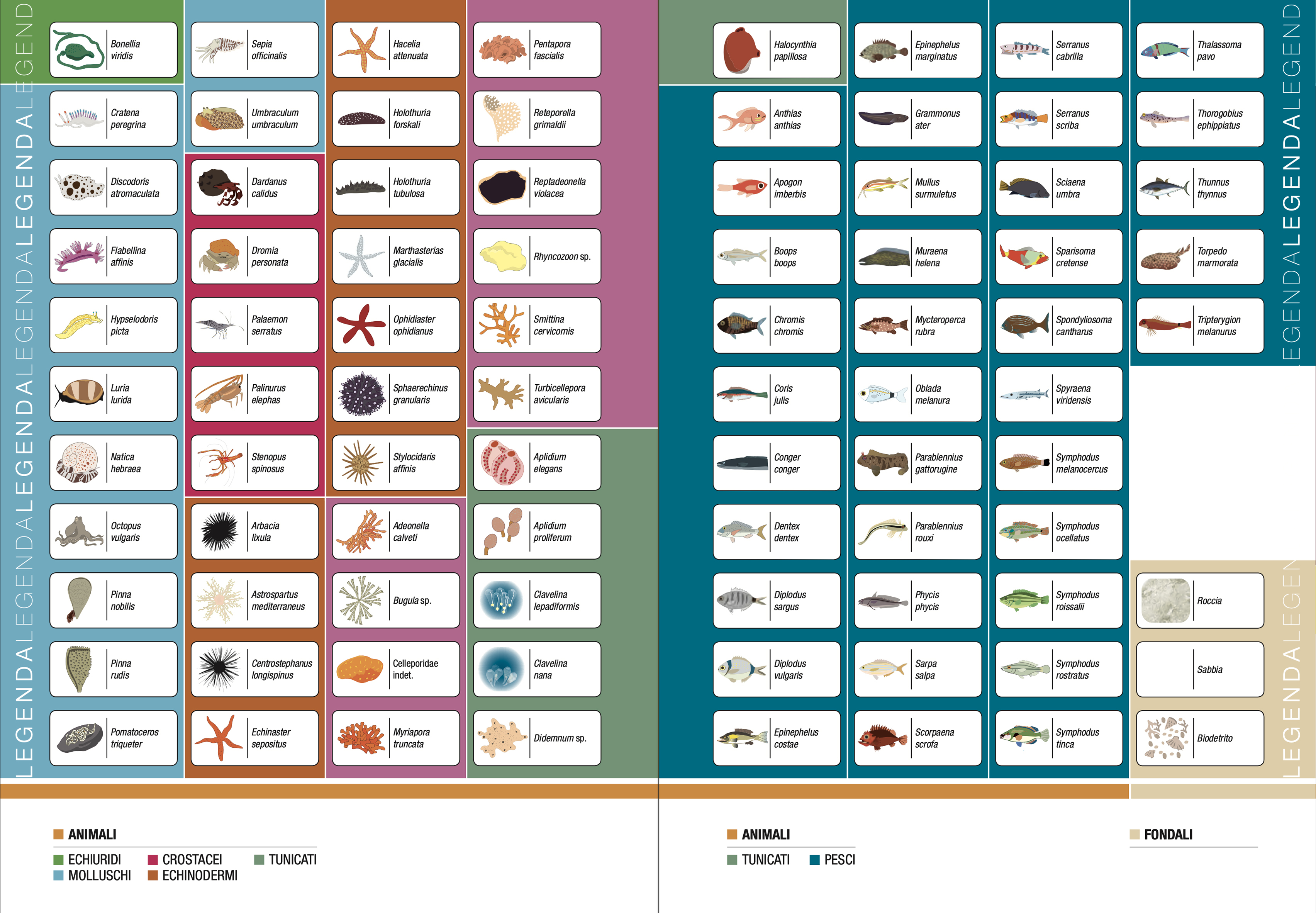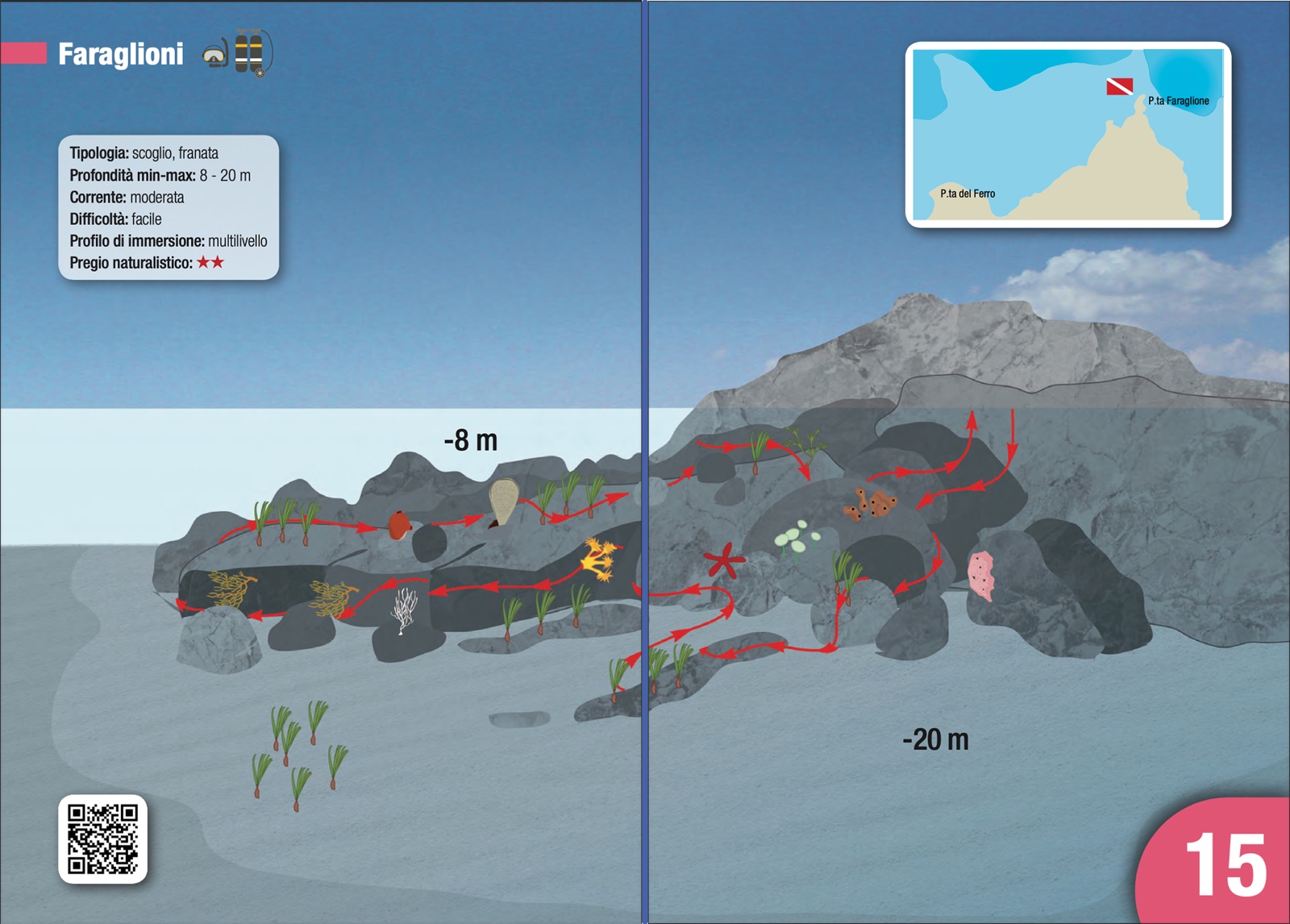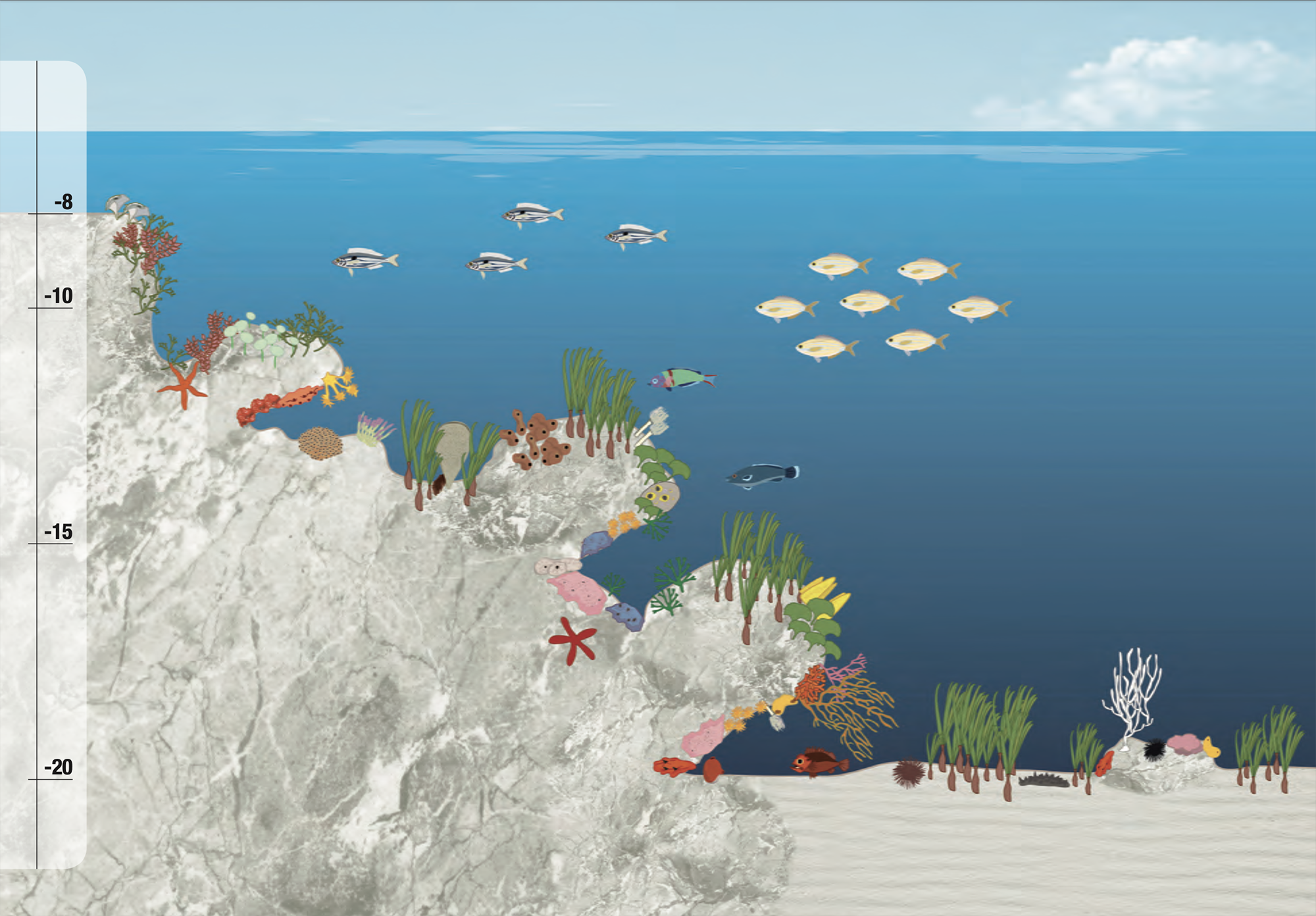Site 15 - Faraglioni
The site is located within reserve zone B of the MPA 'Egadi Islands' and is suitable for both snorkelling and diving. Punta Faraglioni continues underwater in an elongated carbonate ridge in a N-S direction that can be recognised down to a depth of 15 m. The dive route begins at about 8 m in a landscape consisting of the medium inclined rocky substrate interspersed with large collapse boulders to a depth of about 20 m. Numerous algal species colonise the rock in the first few metres (Asparagopsis armata, Padina pavonica, Dictyotales spp., Acetabularia acetabulum). Continuing on, Posidonia oceanica constitutes a characterising habitat with rhizomes conspicuously colonised by sponges and encrusting bryozoans. Of note are the presence of Pinna nobilis, the largest bivalve in the Mediterranean, colonies of the pillow moth (Cladocora caespitosa) and the actinia Anemonia sulcata. The fish fauna typically inhabiting the posidonia consists of the menola (Spicara smaris), the peacock damsel (Thalassoma pavo), the salpa (Sarpa salpa) and the blackbird wrasse (Labrus merula). In the less illuminated rocky portions, there are the sponges Agelas oroides, Chondrosia reniformis, Phorbas tenacior, Crambe crambe, the piercing sponge Cliona viridis, and the snake star (Ophidiaster ophidianus), while on the more illuminated stretches it is curious to observe the yellow conical sponge Ciocalypta penicillus. Towards a depth of 18 m, the false coral Myriapora truncata, the yellow gorgonian Eunicella cavolinii, the red ascidian Halocynthia papillosa, the madrepore Leptopsammia pruvoti and the serpulid Protula sp. can be seen in the crevices. Small specimens of the red scorpionfish (Scorpaena scrofa) populate the sandy seabed, where, at about 20 m, islands of P. oceanica and collapse boulders alternate with the white gorgonian (Eunicella singularis), orange sponges (Spirastrella cunctatrix), holothurians (Holothuria tubulosa) and the two brown and black sea urchins (Paracentrotus lividus and Arbacia lixula).
Legend:


-
Information
-
Contacts

